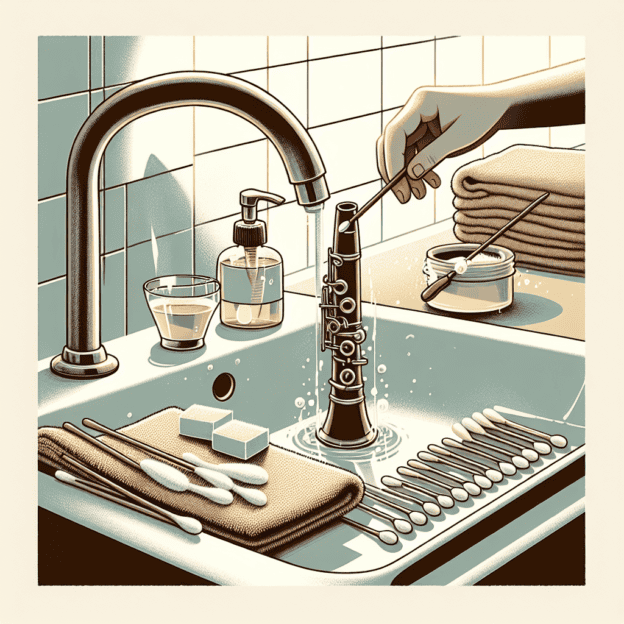As a clarinet player, you already understand the importance of maintaining your instrument for optimal playability. One critical yet often overlooked component of clarinet maintenance is the mouthpiece. A clean mouthpiece enhances your tone, promotes better intonation, and helps prevent unwanted buildup that can affect your playing. In this article, we'll explore essential clarinet mouthpiece cleaning tools and techniques that will keep your mouthpiece in top shape, ensuring you achieve that clean, clear sound you desire.
Why Mouthpiece Cleaning is Important
Your clarinet mouthpiece comes into direct contact with your lips and saliva, making it susceptible to the buildup of moisture, oils, and debris. This accumulation can lead to:
- Bacterial Growth: Moisture creates an environment conducive to bacteria, leading to unpleasant odors and potentially affecting your health.
- Decreased Sound Quality: A dirty mouthpiece can muffle tones and negatively impact your intonation.
- Quick Wear and Tear: Regular cleaning prevents damage over time, ensuring your mouthpiece lasts longer.
Essential Cleaning Tools
To maintain your mouthpiece properly, you'll need several tools. Here's a rundown of the best tools available to help you clean your clarinet mouthpiece effectively:
| Tool | Purpose | Key Features |
|---|---|---|
| Mouthpiece Brush | Scrubbing inside the mouthpiece | Soft bristles, long handle |
| Microfiber Cloth | Polishing and drying | Gentle, lint-free |
| Warm Water & Mild Soap | Thorough cleaning | Non-abrasive, gentle on materials |
| Cotton Swabs | Cleaning hard-to-reach areas | Flexible, absorbent |
| Clean Drying Rack | Air drying | Keeps mouthpiece off surfaces |
1. Mouthpiece Brush
A specialized mouthpiece brush is a must-have for any clarinet player. These brushes are designed to fit inside the mouthpiece, allowing you to scrub away any residue.
- Look for brushes with soft bristles to avoid scratching the interior of your mouthpiece.
- Mouthpiece brushes often come with a long handle, making it easier to reach the hard-to-clean parts.
2. Microfiber Cloth
Using a clean microfiber cloth is key for polishing your mouthpiece after cleaning. These cloths are gentle and effective at removing fingerprints and moisture without causing scratches.
- Always keep a separate cloth for your mouthpiece to prevent cross-contamination with your instrument.
- Microfiber cloths are washable, allowing for ongoing use.
3. Warm Water and Mild Soap
For a thorough clean, warm water and a mild soap solution are the best choice. Avoid using harsh chemicals that can damage the material of your mouthpiece.
- Fill a bowl with warm water and add a drop of mild dish soap.
- Soak the mouthpiece for a few minutes for better cleaning.
4. Cotton Swabs
Cotton swabs are handy tools for cleaning those hard-to-reach areas of your mouthpiece.
- Moisten a cotton swab with your soap solution to access crevices and narrow areas, effectively removing any stubborn residue.
- After cleaning, use dry swabs to absorb excess moisture.
5. A Clean Drying Rack
After cleaning, it's important to allow your mouthpiece to air dry completely. A clean drying rack keeps your mouthpiece off surfaces that can harbor bacteria.
- Ensure the drying rack is clean to avoid cross-contamination.
- Place the mouthpiece in a well-ventilated area away from direct sunlight.
Cleaning Steps
Now that you have your cleaning tools ready, here are the steps to effectively clean your clarinet mouthpiece:
- Remove the Mouthpiece: Take the mouthpiece off the clarinet carefully, ensuring not to damage the cork.
- Soak: Soak the mouthpiece in your mild soap solution for a few minutes to loosen any debris.
- Brush: Use the mouthpiece brush to scrub the inside and outside gently, making sure to clean all surfaces.
- Detail with Cotton Swabs: Take moistened cotton swabs to clean any remaining buildup in small crevices.
- Rinse: Rinse the mouthpiece thoroughly under warm water to remove all soap residues.
- Dry: Use a clean microfiber cloth to wipe down the mouthpiece, and then place it on your drying rack.
Regular Maintenance Tips
To keep your mouthpiece in optimal condition, here are additional maintenance tips:
- Daily Rinse: After each playing session, rinse your mouthpiece with warm water to remove moisture and saliva.
- Weekly Deep Clean: Perform the full cleaning routine weekly, especially if you play regularly.
- Check for Damage: Periodically inspect your mouthpiece for chips or cracks that can affect performance.
Conclusion
Taking the time to properly clean your clarinet mouthpiece will result in better sound quality and longevity of the instrument. With proper care, including the right tools and techniques, your mouthpiece will provide the best possible playing experience. By making this part of your clarinet maintenance routine, you'll keep your instrument in great condition and enjoy your music-making even more!







